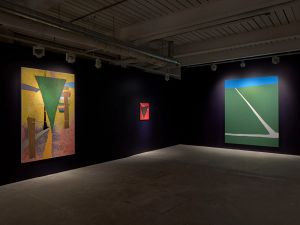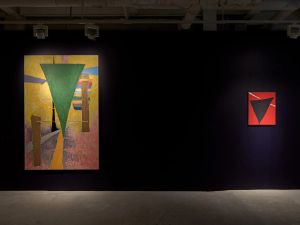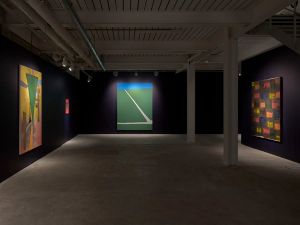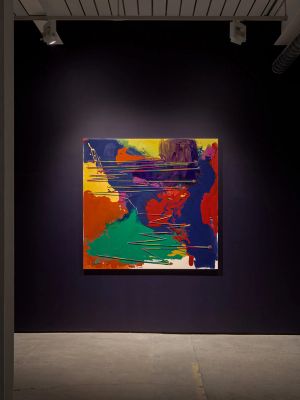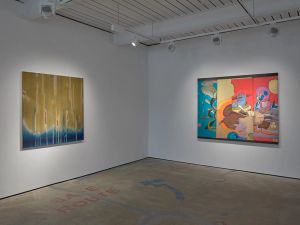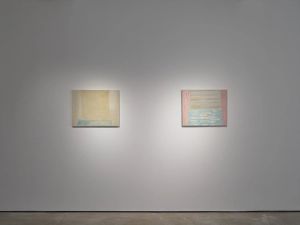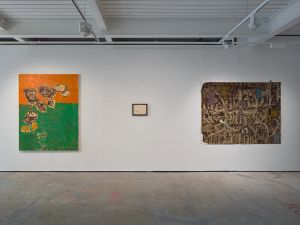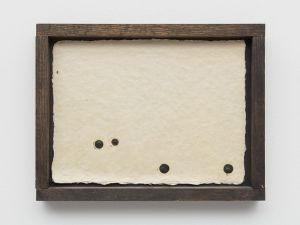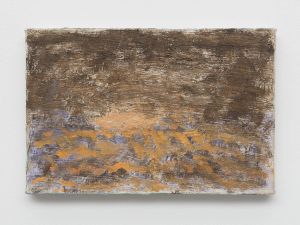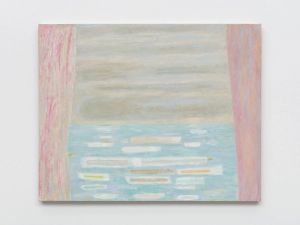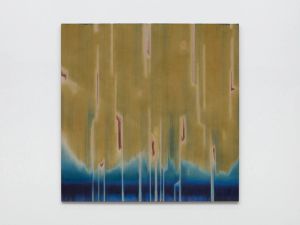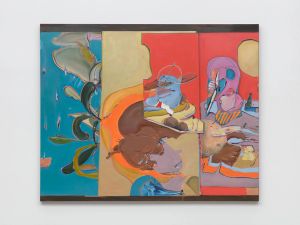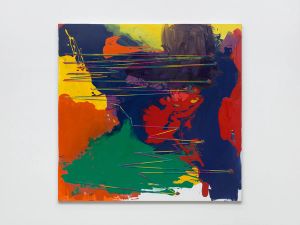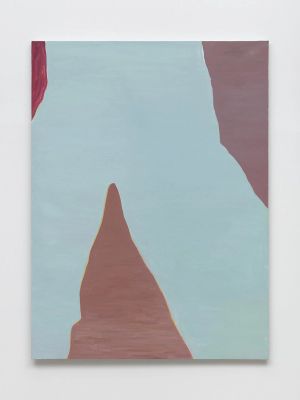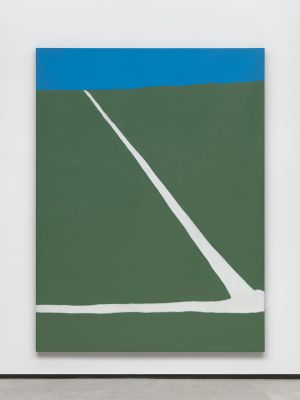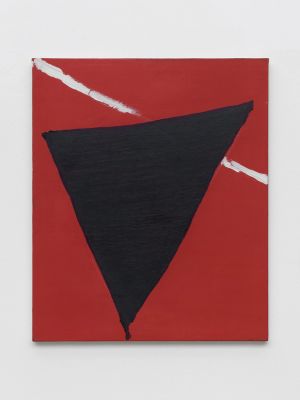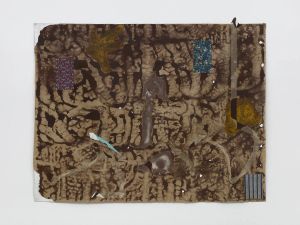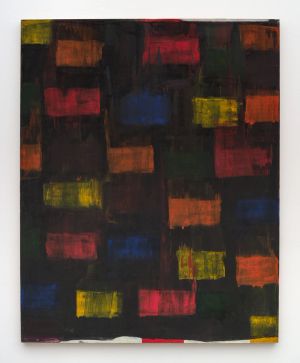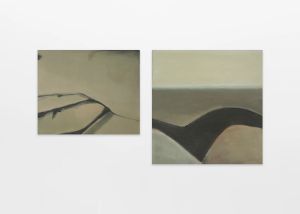GATHERING 5 Warwick Street London
Gathering is thrilled to announce Symptoms of Painting, a group presentation featuring Richard Aldrich, Alvaro Barrington, Julie Beaufils, Rochelle Feinstein, Stefanie Heinze, Raoul De Keyser, Francis Offman, Kentaro Okumura, Hiroshi Sugito and Luc Tuymans.
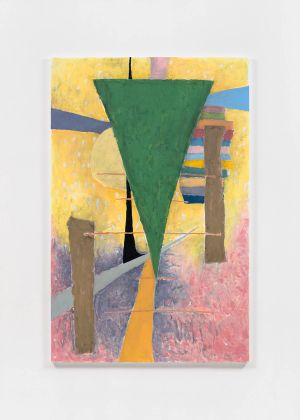
From today, painting is dead! - Paul Delaroche, around 1840
Painting has long run its course, and the painter himself is a prejudice from the past. - Kazimir Malevich, 1920
Basically painting is pure idiocy. - Gerhard Richter, 1973
The most persistent trope in conversations about modern painting is the idea that the medium is dead or dying. In the nineteenth century, this belief was provoked by the invention of photography, and in the early twentieth motivated by the iconoclastic pretensions of the avant-garde. Then, in the final decades of the millennium, postmodernist theorists, mostly in New York, launched a critique of painting’s traditional values – authentic expression, the semantic stability of images and the creative power of the individual ‘genius’ – thereby hammering another nail in the medium’s imagined coffin. ‘It is both amusing and pathetic,’ remarked Thierry de Duve in 2003, ‘that about once every five years the death of painting is announced, invariably followed by the news of its resurrection.’
Two Belgian painters a generation apart, Raoul De Keyser (1930-2012) and Luc Tuymans (1958-), both emerged on the international scene in the 1980s with responses to this seemingly endless dilemma. Having internalised postmodern criticality, Tuymans took a negative approach, using painting in part to thematise the medium’s own inadequacies. Working mostly from obscure TV and film stills, he deploys an intentionally crude style with flat paint, a limited range of colours and awkward close crops – always casting more doubt than light. He varies his technique across pictures to mock any idea of a coherent authorial self and often invokes weighty subjects like colonialism or genocide only to stress painting’s inability to confront the enormities of history.

De Keyser also disregarded old hang-ups about authorial singularity and artistic truth: his images are similarly mute and shallow despite their recognisable content. Initiating his practice back in the 1960s, though, he was less burdened than Tuymans by the demands of postmodernist theory and less exposed to the slippery surfaces of screen media. As a result, the rejection of traditional aesthetic values in his work is less nihilistic than it is liberating, resulting in a joyful inclusivity of subjects and styles. Middellijn (Half-Way Line) (1970), for instance, turns a football pitch into a simple abstract form – wavering between illusionistic depth and colour-field flatness – while Zes voor P.5 (1986) recreates the exacting geometries of Soviet Suprematism in the casual hand of a Sunday painter. De Keyser domesticated the avant-garde and elevated the everyday. As Roberta Smith summarised, he ‘always avoided extremes. His lines were never ruled, his edges never hard; his loose brushwork was devoid of angst.’
What does it mean to talk about the symptoms of painting? That painting is itself a lingering disease, like a rash on the wall? Or maybe that painting is the sickly patient who needs to be diagnosed, protected, quarantined? Either way, with this phrase the viewer seems suddenly implicated in the medium’s fate. More importantly, to talk of symptoms is to shift focus away from thoughts of death and birth, mourning and renewal. It is to dismiss tired narratives of progress and destruction in favour of more sustainable or understated models of artistic production. After all, illness is not only a threat to life but also evidence of it; symptoms are as much expressions of feeling, of sensitivity to the world, as they are signs of frailty.
Aligning with De Keyser’s approach, the contemporary painters included in this exhibition negotiate subtle gradations of experience with their modest canvases. They draw freely on the diverse vocabularies of twentieth-century art – of gestural markmaking, Pop referentiality, Art Brut roughness – without subscribing to any one dogma and often mediating between mimesis and abstraction. Look at the serene canvases of Hiroshi Sugito and Julie Beaufils, for instance, in which expansive landscapes are composed of floating plains of pure colour, or Richard Aldrich’s A Physical Manifestation of the Journey through Exaltation (2022) in which the bold shapes of classical modernism appear like circus paraphernalia – kites precariously tied to the ground, liable to fly away. The dispersal of contrasting elements across Francis Offman’s untitled (2023) collage, meanwhile – bright scraps of pointillist paint and patterned fabric atop grimy passages of sepia watercolour – embodies this casual approach to aesthetics, prioritising the expressive potential of the meeting of different styles over their respective ideological associations. In the terms of recent criticism, these artists embrace ‘affect’ or ‘mood’ instead of grandiose conceptual statements, dealing not in fatal blows or miracle cures but symptoms.
Featuring works by Richard Aldrich (1975)Alvaro Barrington (1983)Julie Beaufils (1987)Raoul de Keyser (1930 – 2012)Rochelle Feinstein (1947)Stefanie Heinze (1987)Kentaro Okumura (2002)Francis Offman (1987)Hiroshi Sugito (1970)Luc Tuymans (1958)
Gathering would like to extend thanks to Bridget Donahue, David Zwirner, Emalin, Hannah Hoffmann, Herald St., LC Queisser, Matthew Brown Gallery, Modern Art, Nonaka Hill, Tomio Koyama and Vardaxoglou
Text by Michael Kurtz
Installation photography by Ollie Hammick Work photography by Ollie Hammick, Peter Schälchli, Pierre Le Hors and Paul Salveson
